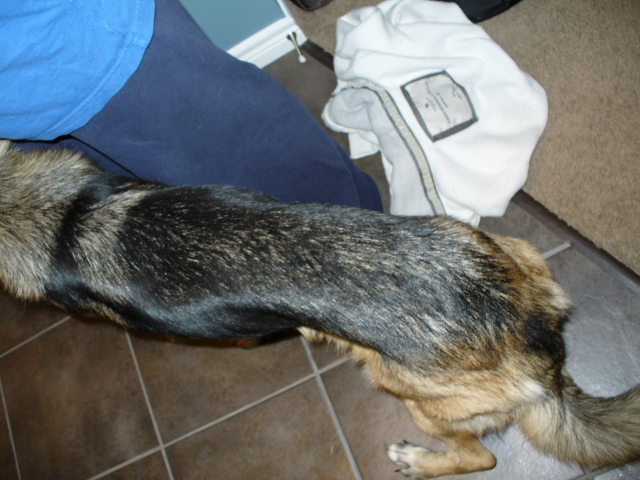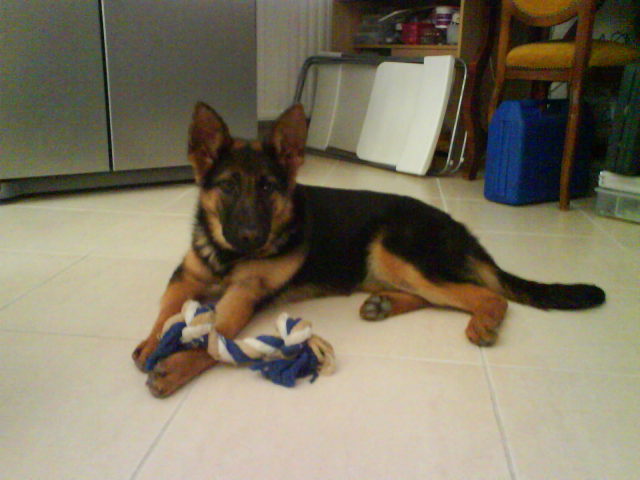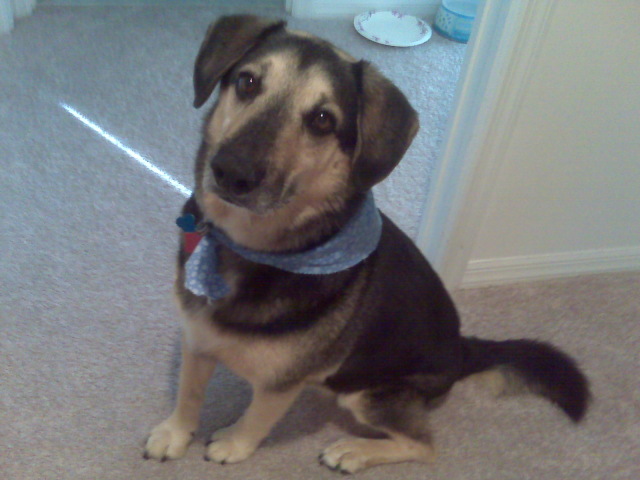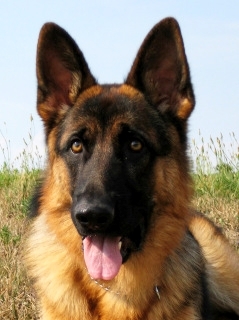QuestionLast month we were given a 9 month old (approx), Male, German Shepard rescue (not neutered). The dog is was abandoned and found in a vacant house. The dog is well behaved when it's not in the crate. However, at night the dog will bark, cry and scratch at the crate as soon as we go in the bedroom. When we are away at work, the dog tries to destroy the crate. He even escapes from it and cuts himself on the door as he squeezes out.
Leaving him out isn't an option cause he chews and destroys everything, which is the same thing he does when he escapes. I thought he would just get used to it, but a month has passes now. The weird thing is he will just go in it and hang out inside it when were around. Need some help please. Thank You
AnswerThis is a difficult problem I may or may not be able to help solve. While I suggest rescue every chance I get, sometimes rescued dogs have difficult issues from their past. Start with a vet visit. Have him checked over. Schedule having him neutered. There is no good reason not to, and it should help a good deal. Also talk about medication. You need immediate help. Even neutering him will take weeks to show the full effect. You should be able to take him off the medication later, but have to have something now.
How long are you leaving him in the day time? Anything more than 4-5 hours without a break is too long and contributes to the problem. If you can't make it home to give him a mid day break, find a neighbor or professional dog walker that can. doggy day care would be good too.
With a new puppy, what I do is lay down by the crate like I was going to sleep there. Usually a puppy may fuss a little, but then settle down and go to sleep. Once it is asleep, you can get up and go to bed. I don't know if that would help in this case or not. Easy to try.
Longer term, he needs strong leadership. The key to most behavior problems is approaching things using the dog's natural instincts. Dogs see all the people and dogs in the household as a pack with each having their own rank in the pack and a top dog. Life is much easier if the 2 legged pack members outrank the 4 legged ones. You can learn to play the role of top dog by reading some books or going to a good obedience class. A good obedience class or book is about you being top dog, not about rewarding standard commands with a treat. Start at http://www.dogsbestfriend.com/ For more on being top dog, see http://www.dogbreedinfo.com./topdogrules.htm
This is meant for younger dogs, but do what you can. ''Elevation for small puppies: Sit on the floor and gently put your hands around your pup's middle, below his front legs, and lift him up. He is facing you. Hold him for 15 seconds. Repeat until he no longer struggles. If he is past 10-12 weeks, lift his front feet off the ground, but don't pick him up.
Cradling for small puppies: Hold your puppy gently on his back, as you would cradle a small baby. If he struggles, hold him firmly until he quiets for 10-15 seconds. With larger pups, you can do this as your sit on the floor, with your pup between your legs.
Quiet lying down: Place your pup on the floor on his side, with all 4 legs pointing away from you. Use your hands on his neck/shoulder area and middle, to hold him in this position. When he is quiet, praise him. Lengthen the time that you keep him quietly in this position. When he accepts this position well, handle his paws and muzzle, while keeping him quiet.''
The quotes mean this isn't my original work. It is copied from my Puppy Raising Manual. I have long used these or minor variations of them, and they are very effective. You may want to give him a belly rub while he is on his back too. Helps bonding. There is a big difference between him rolling over and demanding a belly rub, and you choosing a time to roll him over and rub his belly. The latter cements your place as pack leader.
He might accept a tie down better than a crate. You need a short chain secured at one end and a snap at the other. Clear anything that can be chewed out of the area he can reach.
The above gives you a chance to fix the problem. You may still need to call in a private trainer or behaviorist.

 purebreed german shepherd?
Question
king
I purchased a dog 2months ago and he weig
purebreed german shepherd?
Question
king
I purchased a dog 2months ago and he weig
 Very thin German Shepherd
Question
Sadie
Hi
We are having problems getting our
Very thin German Shepherd
Question
Sadie
Hi
We are having problems getting our
 poor growth because bad nutrition
Question
7 month
I bought a female gsd when she was 7 m
poor growth because bad nutrition
Question
7 month
I bought a female gsd when she was 7 m
 German Shepherd Mix Food
Question
Harley
Hello,
I have a 6 1/2 year old German S
German Shepherd Mix Food
Question
Harley
Hello,
I have a 6 1/2 year old German S
 2yo German Shepherd Male
Question
My Boy...
Hi there....I have a 2 year old, pur
2yo German Shepherd Male
Question
My Boy...
Hi there....I have a 2 year old, pur